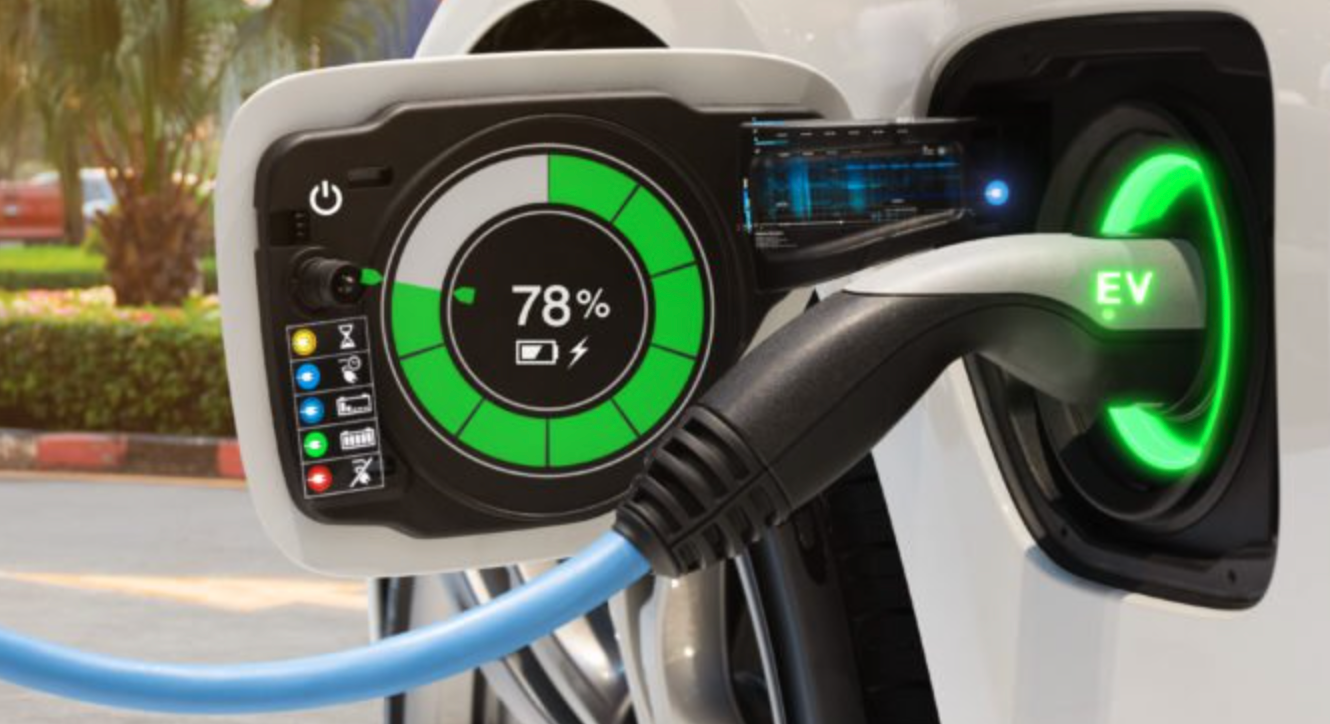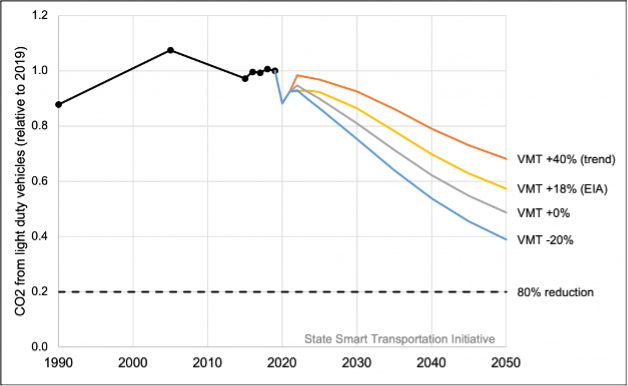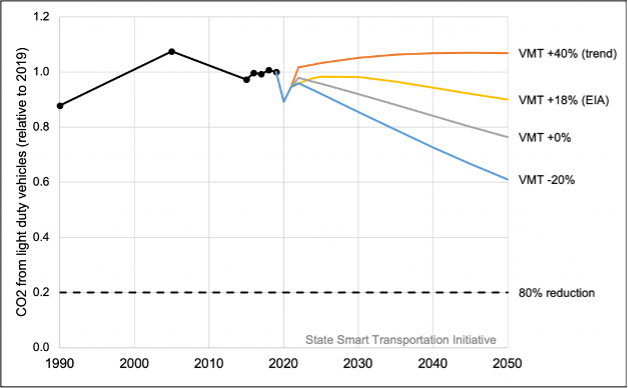Even the most realistic models of the emissions-cutting potential of electric vehicles are still underestimating how much more Americans are likely to drive in the years to come, and their growing preference for gas-powered megacars in the remainder of the vehicle fleet, a new study suggests — and unless policymakers reckon with their communities' addiction to driving big cars as long as possible, their electrification wins easily could be cancelled out.
In a new paper from the State Smart Transportation Initiative, researchers modeled the 2050 climate outlook of the passenger car segment, under four key scenarios:
- A wildly optimistic one in which vehicle miles traveled actually decreases 20 percent,
- An ambitious one in which VMT remains flat,
- A realistic one in which VMT increases by 18 percent, based on the the U.S. Energy Information Administration's latest projections, and
- A pessimistic one in which VMT increases by 40 percent — which is exactly where the U.S. will be if VMT continues to grow at its current rate.
In all four scenarios, the researchers assumed that the country would meet the ambitious but achievable goal of electrifying 40 precent of the total vehicle fleet by the midcentury mark, and that average fuel economy across the entire vehicle fleet would steadily decrease. Analysts estimate that in order to reach those benchmarks, new electric car sales would need to gradually ramp up from the 2-percent of new car sales they represent now to 60 percent of new car sales by the midcentury mark — a daunting but not impossible objective, considering that other countries have already surpassed it.
But even if that happened, the researchers found that U.S. would still fall short of its climate goals — even if Americans significantly reduced how much they drove. In all four of their models, the researchers found that U.S. residents would fail to reduce emissions in the passenger vehicle sector below 80 percent of 2019 levels, an amount that's often cited by climate experts as a gold-standard objective.
Or, to put it another way: even a 20-percent VMT decrease and 40-percent vehicle electrification won't be good enough.
Those models confirmed what previous studies have discovered about the impact of excessive driving on the national climate outlook — but the researchers didn't stop there. They also explored what would happen if 1) electric car sales didn't take off the way EV enthusiasts hope, and 2) if the average fuel economy of new gas-powered cars failed to drop at the rate that most climate models assume they will.
And neither of those possibilities are outliers. Thanks to Americans drivers' and automakers' growing love affair with polluting and pedestrian-killing SUVs and light trucks, the average car on the road in 2019 (the last year for which data is available) got just 22.2 miles to the gallon, a number that has barely budged since 2014 despite high expectations for new developments in fuel efficiency technology. Experts say some megacar buyers will be swayed by green monstrosities like the electric Hummer and the Ford F-150 Lightning, but many won't: polls show that right now, 29 percent of Americans explicitly don't want an EV — and only 27 percent said they would even "consider" one.
Those numbers may shift, particularly if President Biden's Build Back Better Act succeeds in delivering billions for EV chargers and consumer incentives. But if that rollout doesn't go as planned — an all-too-real possibility with the bill currently in limbo — the SSTI researchers fear that America could actually increase emissions, even with massive numbers of new electric cars on the road.
In what the researchers describe as the "worst case scenario" — but which may prove all too realistic — the share of vehicle miles travelled by electric vehicles would hover at just around 15 percent (consistent with U.S. Energy Information Administration estimates) and average fuel economy increases would continue rising at their current rate, landing around 29 miles per gallon by 2050.
If both those things happen and VMT increases stay steady, the passenger vehicle sector would actually get even dirtier than it is right now.
"When we talk about EV adoption, we tend to build in all these really ambitious assumptions: about increasing average fuel economy, about moving to green electricity, and lot of people buying electric cars," said Chris McCahill, managing director for SSTI and the lead author of the study. "If you dial back any of those things, the situation plays out very differently."
McCahill says there's a lot that states can do to steer their communities towards the more optimistic scenarios in his model — even if Congress continues to drag its feet on reining in the megacar crisis and making transformative federal investments in transit. He points to a state law in California which "requires state and local agencies to limit and mitigate any new VMT caused by developments or transportation investments," and a raft of proposed rules in states like Washington and Colorado that have a similar impact.
But despite these small victories, he says too many leaders aren't sweating the math on the actual climate impacts of our transportation choices — and that they need to take a hard look at their community's driving addiction even as electric vehicles start rolling onto their roads.
"In the U.S., we have a history of just sort of creating these straight-line forecasts of VMT, and saying, 'Well, here’s not much that we can do about that,'" adds McCahill. "But VMT can actually swing quite a bit based on the economy, or the pandemic, or the decisions we make [about where we invest our transportation dollars]. Maybe some folks aren’t ready to think about how our choices influence that trajectory, but we really should."








